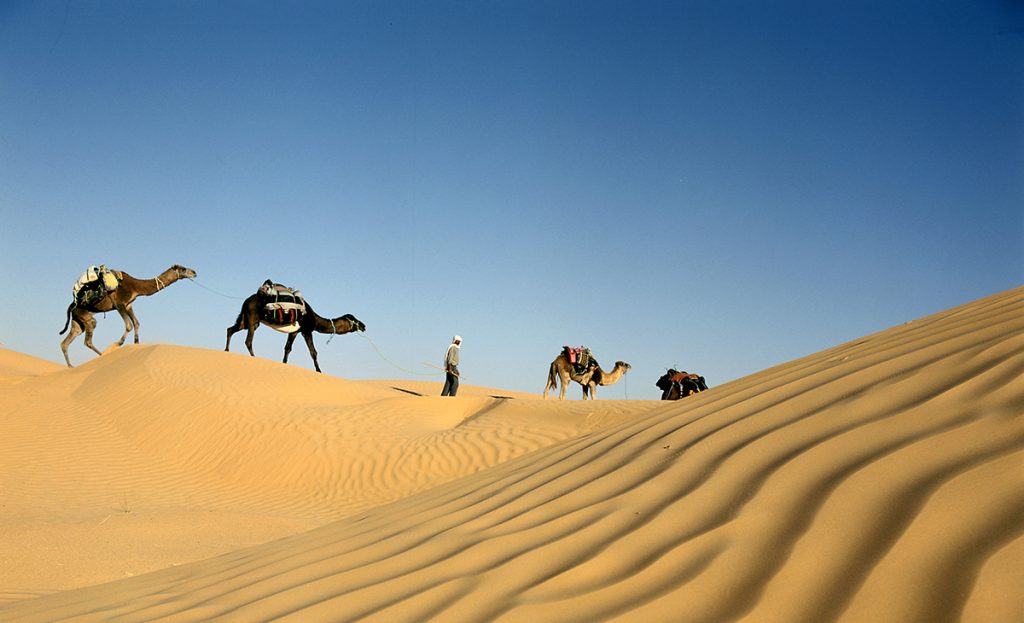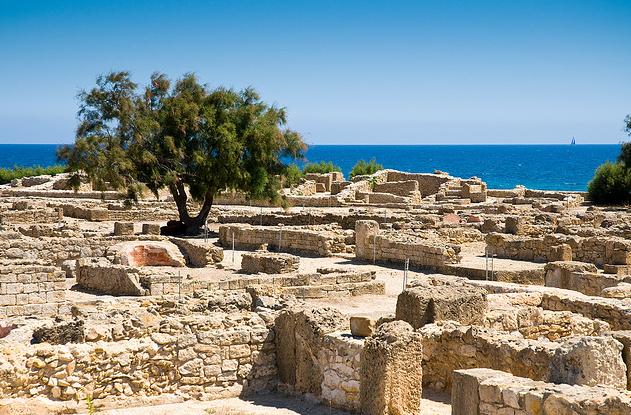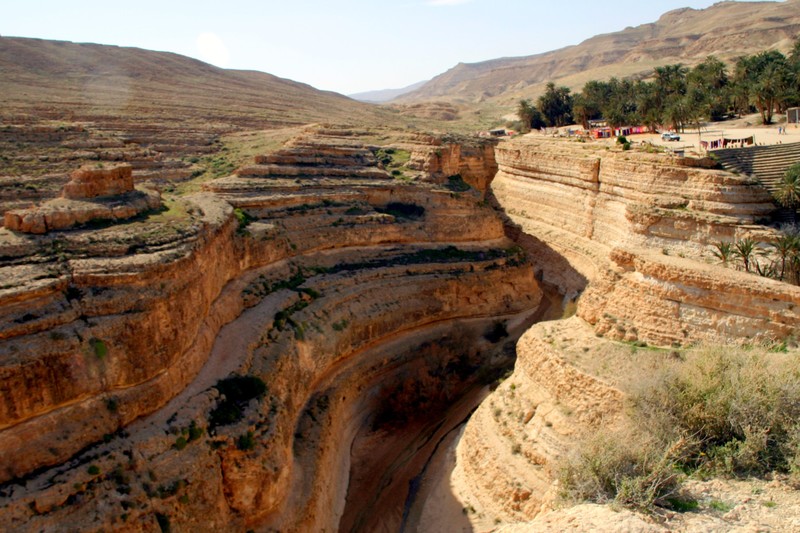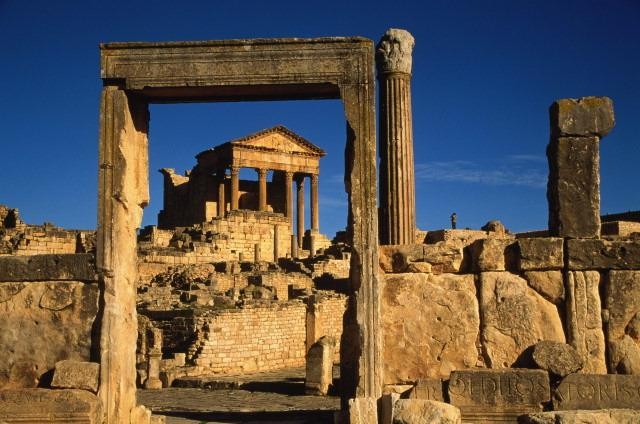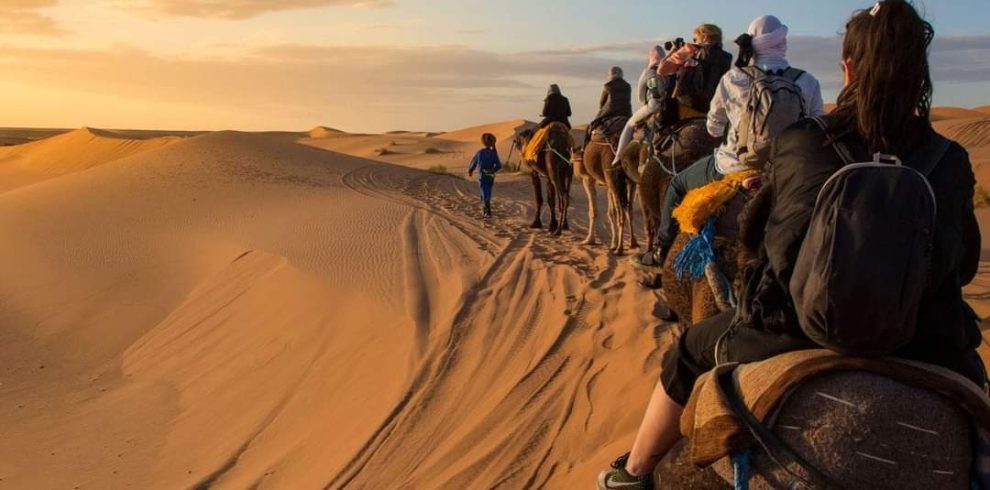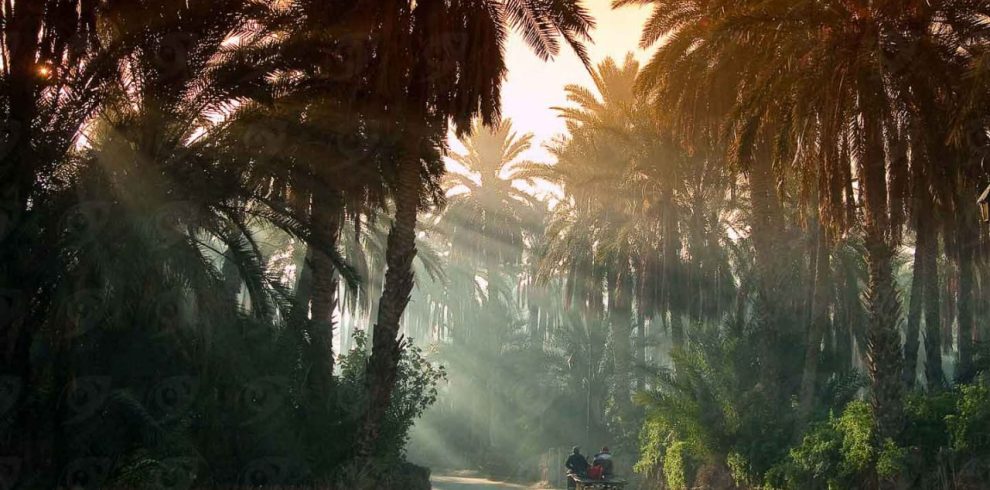Carthage was founded in the 9th century B.C. on the Gulf of Tunis. From the 6th century onwards, it developed into a great trading empire covering much of the Mediterranean and was home to a brilliant civilization. In the course of the long Punic wars, Carthage occupied territories belonging to Rome, which finally destroyed its rival in 146 B.C. A second – Roman – Carthage was then established on the ruins of the first.
Historical Expedition to Punic – Phoenician–Roman Tunisia
Tunisian republic
Mode of transport: Air-conditioned touristic buses Mileage: 2161 Km
Tourist Guide: Professional National Guide
You can download our guide for our Archeologic Tour bellow:
Overview
Archaeological–Historical Expedition To Punic – Phoenician–Roman Tunisia
11 nights and 12 days
HALF BOARD STAY
Tunisian republic
Mode of transport: Air-conditioned touristic buses Mileage: 2161 Km
Tourist Guide: Professional National Guide
Program
Airport / Tunis
Arrival of the group on an organized flight at the international airport of Tunis-Carthage. Welcome by the agency's tour guide.
Straight to Hotel Africa Tunis Installation for dinner and overnight one night on Half Board
Tunis / Bulla Regia / Chemtou / Dougga
Departure from the Hôtel Africa Tunis, after breakfast at 8 a.m., direction Bulla Regia for a visit to the Roman Archaeological Site of B.R, the underground villas, are the main attraction (house of Amphitheatre with magnificent Mosaics. Then straight to Chemtou the original Numidian settlement of Simitus. The colony won fame, for its Golden-yellow Roman marble quarry. More impressive is the Roman Bridge in Medjerda River. Visit of the Museum where we can see history of the interesting Numidian Kingdoms, during the long reign of Massinissa (202-148 B.C). In the afternoon, Continuation through Thibar and Teboursouk to visit the site of Dougga (World Heritage) nearby, for accommodation, dinner and overnight in Hotel Thugga, one night on Half Board
Teboursouk / Utica / Bizerte / Tunis
After breakfast, departure from the Hotel Thugga at 8 am to Utica one of the oldest cities in the west of the Mediterranean basin. It was founded by the Phoenicians in 1101 BC.
But it was Carthage, another Phoenician city founded three centuries later, which became the capital of Punic Africa.
Utica took its revenge after the Roman conquest. For a century and a half it was the capital of the new province until the reconstruction of its rival. Known for its wealth, Utica was nicknamed ‘The Splendid’.
Formerly on a promontory on the seafront, the site of Utica is now 12 km away. You can still see the remains of sumptuous Roman dwellings, their marble or mosaic floors, their interior gardens with waterfalls and fountains, and even stables with feeding troughs. Beneath the Roman level, vestiges of the Punic period have been found: the necropolis (‘city of the dead’) with tombs and stone sarcophagi. The small museum, very rich, has magnificent marble statues, mosaics, Punic jewellery of great finesse.
Utica is located halfway between Tunis and Bizerte, 30 km north of the capital. After the visit to UTICA will continue to Bizerte for a visit, then straight away to the Capital Tunis back to Hotel Africa, for dinner and overnight
Tunis / Shabbat / Casher Dinner
Free Shabbat day / The group will have Casher Dinner
Dinner & overnight in hotel Africa
Tunis / Cap Bon Tour / Haouaria / Kerkouane/ Sousse
Departure after breakfast at 8:00 a.m. from the hotel Africa straight to the Verdant Cap Bon which is now mostly a package-holiday destination, for a visit to Haouaria’s dramatic, rocky coast was quarried by the Carthaginians and the Romans, who sought the highly prized, easily worked yellow sandstone for their massive construction projects, such as the Colosseum in Rome and the amphitheatre at El Jem. Because the quality of the stone was much better at the base of the rock face than at the surface, workers tunnelled into the cliffs, and the result after almost 1000 years of digging is a series of caves stretching along the coast.
Almost all of the caves are now fenced off and cannot be entered, but it's still a beautiful spot where you can wander through mini-ravines spotting ancient chisel indentations as crashing waves provide a peaceful soundtrack.
Continuation to Kerkouane which is Set on a turquoise curve of prime coastal real estate, the Unesco-listed Punic settlement of Kerkouane “the world’s best-preserved example of a Carthaginian city”. Abandoned during the First Punic War, the town was never reoccupied by the invading Romans, so its chequer-board network of streets, houses and workshops remains as it was around 250 BC. Kerkouane's houses are best known for their pink-red baths where residents soaked in private, a major difference to the opulent Roman public baths found elsewhere around Tunisia. Kerkouane was a well-planned town protected by double fortifications, but little is known of the settlement’s history, not even its original name; Kerkouane was the surname of one of the French archaeologists who stumbled on the site in 1952. The oldest remains date to the early 6th century BC, but most are from the 4th to 3rd centuries BC. The town was home to urban, sea-view-loving elite of merchants and craftsmen. Leaving Kerkouane to go straight to Sousse, for Half board accommodation diner and overnight in Hotel Sousse Palace
Sousse / El Jem / Gightis / Djerba
Departure at 7a.m from Sousse to El Jem, via the highway. Stop at El Jem to visit the circular amphitheatre. This Unesco World Heritage–listed colosseum was the second-largest in the Roman world (after Rome's); it was 149m long by 124m wide, with three tiers of seating 30m high. Its seating capacity has been estimated at up to 35,000 – considerably more than the population of the town itself. Built entirely of stone blocks, with no foundations, its facade comprises three levels of arcades. Inside, most of the supporting infrastructure for the tiered seating has been preserved.
Continuation to reach, The Roman port of Gightis, one of Tunisia’s least-visited ancient sites. Established by the Phoenicians, Gightis became a busy port during Roman times, exporting gold, ivory and slaves delivered by trans-Saharan caravans. Most of the buildings date from the 2nd century AD and are spread around the ancient capitol and forum. The site lay buried until the early 20th century and is largely undeveloped.
It’s a good spot for a stroll, with clumps of palms and acacia trees dotting the coast above the gleaming waters of the Gulf of Bou Ghrara. Then, head to Djerba, for accommodation dinner and overnight in Hotel El Mouradi Djerba.
Djerba’s Island Tour / Houmt Souk / Hara Kbira / Hara Sghira
After breakfast, The group will go out for an Island tour of Djerba town and the areas around, on a guided tour to discover the cultural and architectural style of the island Djerba. Free time for shopping. Djerba’s Island Heritage: The capital Houmt Essouk, the Jewish quarter, Hara Kbira and Guellala Known for its Pottery. then continuation to Hara Sghira the Synagogue to celebrate the Hilloula kharja. Back to the hôtel El Mouradi for Dinner and overnight
Djerba / Sfax / Sbeitla
Departure from the hotel at 7 a.m. from Djerba to Sfax, for a visit. Then direction Sbeitla for a visit to the SUFETULA Site. The museum across the road from Sufetula has a small collection of mosaics, sculptures, stelae and other artefacts that have been found on the site and moved here for safekeeping. Accommodation in Hotel Byzacene Sbeitla for dinner and overnight
Sbeitla / Maktar / Yasmin Hammamet
After breakfast, departure from Sbeitla hotel, at 8 a.m, straight away to Maktar to visit Maktaris site and its small Museum.The site has not yielded any remains from the oldest period of Phoenician settlement in North Africa. However, the Punic or neo-Punic collections, of Punic civilization but dated to a period after the destruction of Carthage during the Third Punic War, are particularly interesting.
They consist essentially of Punic and neo-Punic ex-votos and, Punic and neo-Punic characters. These discoveries make it possible to understand the relationship between the Punics and the indigenous populations, as well as the “punicization” of the latter, including in a period after the annihilation of the great African city. Also found in this department of the museum, architectural elements. Continuation via Siliana through Fahrs’ Bridge to visit the Roman Site Thuburbo Majus, stop at the Temple of water in Zaghouan build by the Roman Emperor Hadrian to go straight to Yasmine Hammamet for accommodation dinner and overnight in Hotel Blue Marine
Hammamet / Nabeul / Tunis
After breakfast, departure from the hotel at 8:30 am, straight to Nabeul to visit the cemetery where the grave of Errebbi Jacob Slama, then a visit to the pottery and ceramic workshops. Straight away towards Tunis to the northern suburbs: to visit Carthage which is Tunis’ most exclusive residential suburb and retains a sense of historical importance forged over millennia – as well as being home to the Unesco-listed Carthage Archaeological Park.
The Tophet Houses, The Remains of the sanctuary of Carthaginian divinities Tanit and Baal Hammon, the oldest punic religious site in Carthage. According to legends for 7 centuries B.C
The noble Carthaginian brought children to be ritually sacrificed in order to protect their city from invaders.
While ancient sources are unequivocal about the Carthaginians’ practice of child sacrifice, there are various other interpretations as to what may have actually taken place. The Romans, despite their righteous horror, can’t have been too spooked, as they built workshops, warehouses and a temple over the site. Visit to the Punic port, the baths of Antonines, the hill of Byrsa: the Punic quarter of Hannibal.
Then a stop in the wonderful Blue and White, Andalusian village Sidi bou Said corner of poets and artists, the group can have Tea mint & coffee there. Back to Tunis in the Hotel Africa for a Casher dinner and overnight.
Tunis city visit
After breakfast, departure at 8:00a.m, for a Walking tour of the ancient city and its markets, in the old Medina, passing by El Hafsia and the old Jewish quarter. Back to hotel Africa for diner and check out from the hotel for a night flight straight to Tunis Carthage Airport
Check out / Airport Tunis Carthage
Night Transfer, to the Airport Tunis Carthage for Check out and night Flight
The Trip Cost Includes
- Includes transportation all over Tunisia, water during travelling with Kosher food
The Trip Cost Excludes
Frequently asked Questions
Annapurna Base Camp is a Grade B or a moderately difficult trekking route. So any fit person can do this trek, even if you do not have any previous experience. You should be aware of what to expect and mentally prepare for it. Then, as long as you will to, you can.
On average, you walk about 4 to 6 hours per day. One or two days can be as less as 3hrs and one or two days can be as long as 7hrs.
The highest altitude reached is 4190m. This is the elevation of Annapurna Base Camp. ABC is the highest we will climb in this trek.
Yes, you can charge batteries en route. Charger should be brought. There are hot shower facilities as well. You may have to pay certain amount for both ($1-$2). Negotiate. Also, hot water facility could be free at lower elevation.
No. There are no ATMs on this trek route. You will have to draw enough cash in Pokhara or Kathmandu. There are a number of ATMs in these cities. Everything is paid in Nepali rupees. So money should be exchanged before the start of the trek.
Yes. Internet can be accessed in most places. Sometimes, there might be some technical problems. Internet in Nepal is not as fast as you are used to and at times you can just lose connection.
Not really. It depends on you. If you want, ABC trekking can be done independently. You could hire a guide and a porter by yourself instead of going through an agency or not hire a guide at all. Although, not having a guide can be a little problematic during off season.
It really depends on you. Is it your first time in Nepal? How confident are you of being able to find your way around? How pressed on time are you? If you go through an agency, it will be costlier but everything will be planned. You will only have to come, trek and return.
For Annapurna region, pay for guides range from $20 to $30 per day and porters take $15 to $25 per day.



